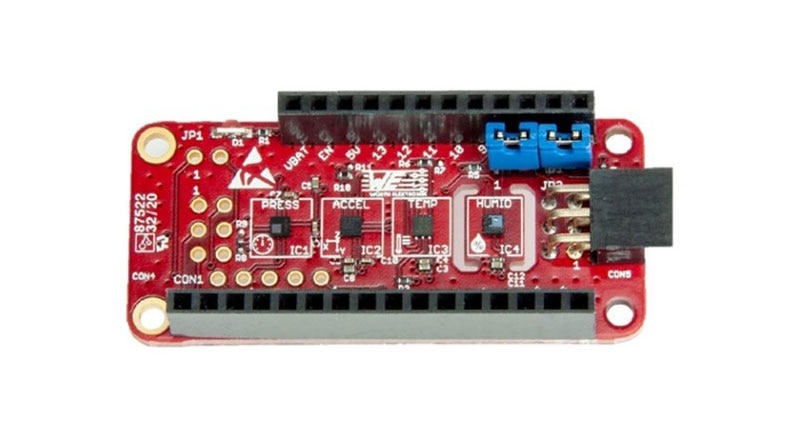Smart, Connected, Secure, and Fast Effortless Design
In the ever-evolving landscape of electronics design, engineers face a multitude of challenges and opportunities. From the relentless pursuit of innovation to the growing demand for connectivity and security, the modern electronics designer must navigate a complex web of considerations.
As we stand at the threshold of a new era in technology, it has become clear that the future belongs to those who can seamlessly integrate intelligence, connectivity, security, and ease of use into their designs.
This blog will look at what effortless design means and the benefits it can bring to engineers. We will use Microchip’s RNBD451PE plug-and-play module as an example of how you can effortlessly add Bluetooth Low Energy (LE) to a design.
What is Effortless Design?
Effortless design refers to creating devices and systems that are not only highly functional but also easy to use, configure, and maintain. It's about simplifying the user experience, reducing complexity, and streamlining the design process.
Here are some key aspects of effortless design:
- Intuitive User Interfaces: Effortless design involves creating user interfaces that are intuitive and user-friendly. Designers should be able to interact with the device or system without needing extensive training or consulting complicated manuals.
- Plug-and-Play Integration: Devices should seamlessly integrate with other hardware or software components, allowing for plug-and-play functionality. This reduces the need for designers to engage in complex setup procedures.
- Robust Security: While ease of use is a priority, security should not be compromised. Effortless design incorporates robust security measures to protect against cyber threats and unauthorized access.
- Scalability: Effortless design takes scalability into account, making it easy to expand or upgrade the system as needs evolve, without causing disruptions.
The Benefits of Effortless Design
- Faster Time-to-Market: Simplified design processes and intuitive interfaces can streamline product development, reducing the time it takes to bring a product from concept to market. This can give companies a competitive edge.
- Broadened Market Reach: Effortless design makes products more accessible to a wider audience, including individuals with varying levels of technical expertise. This can expand the market and reach new customer segments.
- Reduced Risk of User Errors: Intuitive interfaces and design choices that minimize complexity can reduce the likelihood of user errors, enhancing the safety and reliability of products.
Adding Bluetooth LE to your designs
Adding Bluetooth LE to designs has become relatively straightforward thanks to the availability of integrated components and development tools.
 RNBD451PE plug-and-play Bluetooth Low Energy Module (Image source: Microchip Technology)
RNBD451PE plug-and-play Bluetooth Low Energy Module (Image source: Microchip Technology)
One such component is the RNBD451PE plug-and-play Bluetooth LE module from Microchip.
The RNBD451 module is based on Microchip’s PIC32CX-BZ2 Bluetooth Low Energy System-on-Chip (SoC) that provides a complete solution to implement Bluetooth 5.2 Low Energy connectivity. These modules are interfaced via a two-wire or four-wire UART interface using Microchip’s simple ASCII command set for easy integration into most applications. The host microcontroller can dynamically configure the RNBD451 module with a few simple ASCII commands.
The RNBD451PE is truly plug-and-play; no programming, RF design, or regulatory certification is required. The module comes with an onboard PCB antenna built for optimal RF performance, saving time and RF-design hassle. RNBD451PE modules are pre-certified in the US, Canada, Europe, Taiwan, China, Japan, and Korea.
Key features include:
- Over-the-air (OTA) remote configuration
- Embedded enhanced security
- 2M uncoded PHY and long range (coded PHY)
- Extended advertising
- Data length extensions and secure connections
- Supports Bluetooth LE GATT client and server roles
- Supports up to six concurrent Bluetooth LE connections
- 12-bit analog-to-digital converters (ADC) successive approximation register (SAR) module for analog-to-digital conversion
- Add on up to six 16-bit UUID GATT services (public service), four 128-bit UUID GATT services (private service), with each service including up to eight characteristic attributes
- Supports Bluetooth LE advertiser, observer, central, and peripheral roles
Conclusion
Effortless design offers a multitude of advantages that impact both end users and designers. By prioritizing simplicity, accessibility, and usability in product development, designers can create products that are not only technically sound but also more appealing, cost-effective, and competitive in the marketplace.

Have questions or comments? Continue the conversation on TechForum, DigiKey's online community and technical resource.
Visit TechForum







